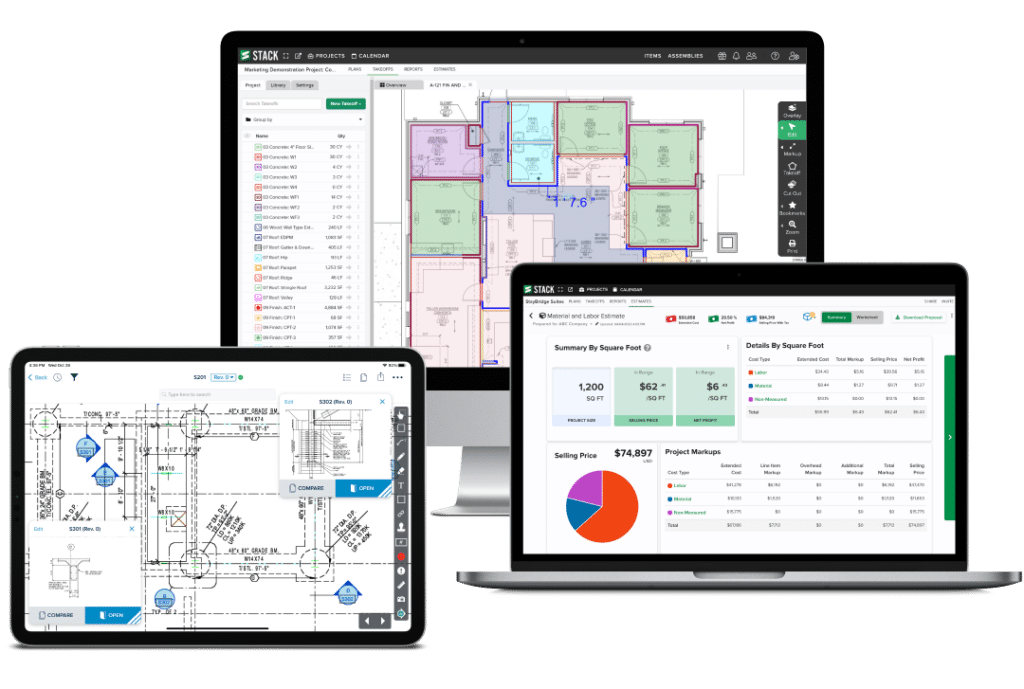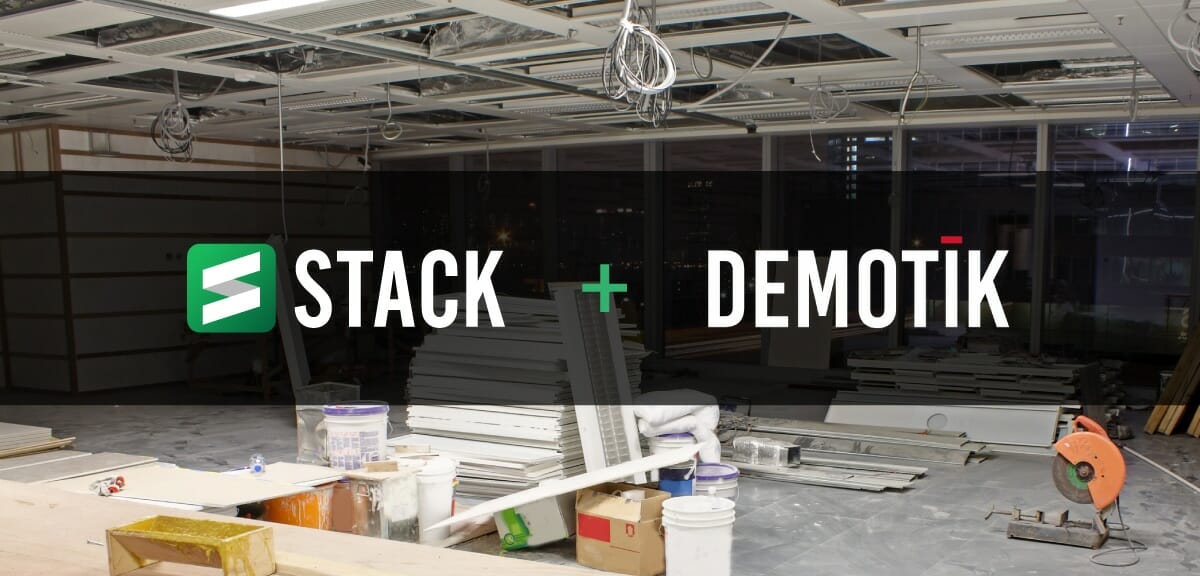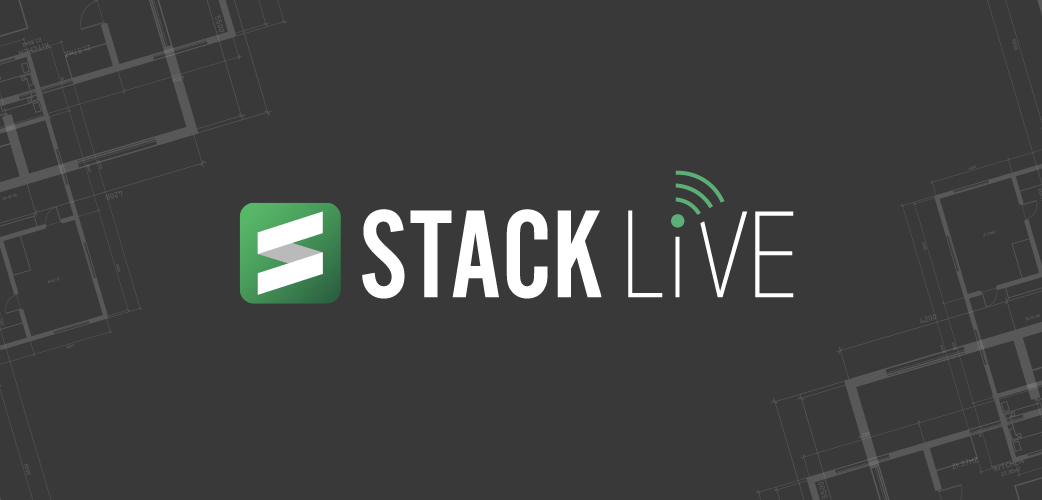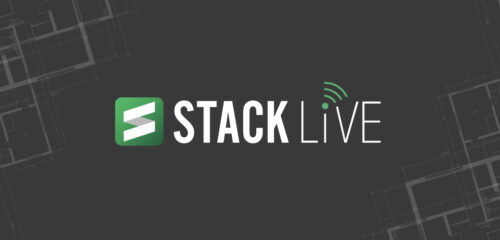STACK’s takeoff and estimating software is made to work for a variety of trades. Here are our tips and tricks for concrete contractors, where concrete estimating software can play a pivotal role in achieving accuracy and efficiency.
5 Main Topics Covered in The Shop Concrete Training
1. Concrete Measurement Types and Takeoff Examples in STACK
2. Pricing Strategies
3. Reports, Estimates, & Proposals
4. STACK Tips & Tricks
5. Concrete FAQs
Concrete Measurement Types and Takeoff Examples in STACK
Volume 2D, Area-based Takeoff
This is best for a concrete slab and a concrete paved section. We’ll show you an area shape on the page for a concrete slab and how to use the keyboard shortcut “Shift” key to quickly take the measurement and enable line snapping to 45-, 90-, and 180-degree angles. Additional data is automatically calculated, like cubic yardage (from the depth you input) and perimeter value as a linear for forming work.
Volume 3D, Linear-based Takeoff
This works similarly to Volume 2D and is best for continuous footings and concrete walls. After inputting the width and depth you’ll take your measurements. What’s great about Volume 3D is you can update your width and depth data if there is a change in wall height without starting a whole new takeoff!
Count, Count-based Takeoff
Best for isolated footers, columns, and piers. Hot tip! List the dimensions in the name of these takeoffs to make them easier to locate. And just click to count!
Pricing Strategies
Depending on what you want to accomplish, you have a few options. STACK Items & Assemblies calculate the individual parts and pieces of a system and focus on price per item. BNI Assemblies are more comprehensive items, focusing on square footage, linear footage, or cubic yardage pricing.
STACK Assemblies
Items grouped together are called Assemblies. Assemblies allow you to answer questions and vary your formula based on the complexity of the project. For example, the STACK Assembly for Concrete Building Slab on Grade 2D asks for things like aggregate base depth, waste factor, and crew productivity. Within the Assembly, use Item Groups to easily access and pick the right component (rebar, vapor barrier, crew sizes, etc) for the concrete project. You can reuse the Assemblies elsewhere instead of rebuilding them, saving time.
BNi Assemblies
There are sample BNI Assemblies available in STACK which are less complex as they focus on cubic yardage or square foot pricing.
Reports, Estimates, & Proposals
All of the Items and Assemblies get translated into the Reports section of STACK. The first three Reports are reserved for Takeoff data – Takeoff Quantity, Takeoff Summary, and Measurements by Takeoff. There are also four Item reports. The purpose of Items is to convert takeoff data into something else – Item List, Item Cost, Item Cost by Type, and Item Cost by Takeoff.
Let’s Take a Closer Look: Items
We’ll show you how to work with the prebuilt STACK Item Slab Concrete, 3000 PSI. The unit of measurement and purchase unit is cubic yardage and is set up with a coverage rate. Within an Item you can store pricing within Cost Types (ex: Equipment, Labor, Material, or Custom). You can also list your Accounting Code, SKU #, QuickBooks Online Product & Service (a STACK integration!), and Unit Cost.
Items Grouped Together Become: Assemblies!
Here we’re working with the prebuilt STACK Assembly, Concrete Building Slab on Grade – 2D. Within Assemblies there will be Required Items and Item Groups. This Assembly will have every Item needed to build a Concrete Slab, with Item Group dropdown list options like Rebar Chairs, Crew for Finish Work, Fibrous Reinforcing, etc.
These Assemblies allow you to customize any formula within each Item, so you aren’t locked into a coverage rate. Pull in a data point from STACK, add in a variable, and convert to another Purchase Unit (ex: Tons vs Cubic Yards).
Watch the webinar for more details on inputting variables from plan notes and details to build this Assembly!
Estimates: Where All Your Takeoff Data Lives
When you work with Items and Assemblies, you’ll use a Material and Labor Estimate. All your measured Items (and the data) become categorized by Cost Type – Crew Hours, Equipment, Labor, Material Costs, etc. Here you can adjust Waste % and Unit Cost if needed. BNI Items pull in regional or national average pricing and plug in the Unit Cost (with separate costs for labor and material). Lastly, you can add in Line Item Markup %, Non-Measured Costs (Equipment, Rentals, etc), Overhead Costs, Additional Markup, and Sales Tax.
On the Summary page of your Material and Labor Estimate you have amazing data points to run your assessments for project pricing. There is a Summary By Key Unit which you can set to Cubic Yard with a profit range for concrete contracting. At the bottom of the page, you can add Scope of Work, Terms and Conditions, customer information, and your logo. Additionally, you can customize your Estimate Summary page by only including specific measurement information from your Takeoffs, Plan Names, Cost Types, or Labels.
While recommended best practice is to keep all of your data in the STACK platform and create detailed estimates and proposals directly from your takeoff information, we recognize that not every estimator works the same way. STACK offers three other ways to Estimate – Export Reports, Excel Plug-In, and STACK’s open API.
And Finally...Proposals!
You’re able to choose a basic view of Proposal with a Summary Page or share additional Line Item Details customized to your liking (Selling Price, Unit Price, Quantity, Takeoff Description).
Bid Faster. Win More. Build Smarter.
Get your FREE account today to:
- Increase Team Efficiency
- Complete Estimates Faster
- Generate More Revenue

STACK Tips & Tricks
– Snapshot Button – a great way to lock in data at that moment. It is a point of reference and backup for when you originally priced the project with a time and date stamp.
– Save things to your Takeoff Library – there is a lot of information already saved into our Concrete Slab takeoff, and this saves it as a template that you can use for future projects.
– STACK’s Takeoff Library has pre-built Assemblies.
– For multiple Footings and Walls, you may want to use the same Assembly. Instead of rebuilding the whole takeoff, Copy and Modify the template, update the name and values, and save time.
– You can hide and unhide any takeoffs with the eyeball icon so you can see the measurements you want on the plans.
– Bookmark tool – Add bookmarks to plan pages to follow links to details and schedules. This allows you to get around STACK and find data instantaneously.
– STACK automatically hyperlinks page names to help you find your data quickly.
BONUS: We’ll show you how to create an Item in detail and create an Assembly from pre-existing Items with a detailed overview of our formula editor. Watch the webinar for more in-depth information on this tip.
Concrete FAQs
Q: How do you measure for other components like forming?
A: There are two ways. You can use the perimeter data from the Concrete Slab Takeoff and take the Linear measurement, adding it to your Assembly. If you’re only forming parts of the slab (say it butts up to another slab), it’s best to measure that as a separate Takeoff.
Q: Is it possible to rearrange open tabs?
A: Not at this time, but if you have a long list of tabs open you can use the dropdown list at the top of the page. The order that you select the pages is the orders the tabs will show.
Q: How do you handle different sized rebar in the same area?
A: You can add multiple Assemblies to the same Takeoff, like Rebar For Slab – Area. You can also copy that Assembly and add multiple copies of that for more options.
Q: How do you list your Takeoffs in the Proposal?
A: By default, your Worksheet is set up by Cost Type. You can click “Material and Labor Estimate” in the top left corner and filter your data by Takeoff. Additionally, you can go to Download Proposal and show your project total by Takeoff or all Line Items by Takeoff.
Q: How do you enter the lump sum amount from your vendors or subcontractors?
A: In the Non-Measured Costs section of the Estimate, type in your data directly. If you want to incorporate it under a specific Cost Type, you can create an Item and add it to a Count Takeoff.
Q: How can I review this at my own pace?
A: Watch the webinar, review our Online Help Guide with great articles and tutorials, use Live Chat within STACK, and review the Concrete Quick Reference Guide below. STACK always encourages you to continue your education on our platform through Training!
Interested in more concrete-specific resources? Check out STACK’s FREE Ultimate Guide to Finding, Bidding, and Building Your Best Concrete & Masonry Projects!








